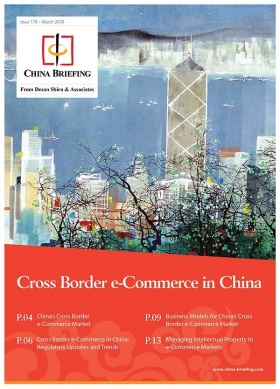China–India Ties: In Search of a Reset in Wuhan
President Xi Jinping played host to India’s Prime Minister Narendra Modi last week in the city of Wuhan, Hubei province.
Over two days, from April 27 to 28, the two leaders maintained a careful bonhomie – assuring journalists and strategic hawks alike of their relaxed conversations and broad agenda.
The ‘informal’ summit came as a surprise to many, marking less than a year since China and India came close to blows over the disputed border region of Doklam, situated between Tibet and Bhutan.
But, a year can be a long time in international politics.
Today, as US President Trump directly pushes for increasing trade protectionism, the Korean peninsula edges towards some form of reconciliation without Chinese interference, and India readies itself for a general election in 2019, Xi and Modi, both, find themselves increasingly needing the other.
That means showcasing diplomatic prowess, securing their regional importance, and preserving the globalized economic order based on free trade and commerce, critical to their status as the world’s largest and fastest-growing emerging economies.
It is especially the latter – confronting Western trade protectionism – that may have pushed China to talking with India so soon.
![]() RELATED: China-Germany Relations: Opportunities Emerge as Investment Ties Grow
RELATED: China-Germany Relations: Opportunities Emerge as Investment Ties Grow
Addressing the trade deficit
To the neutral bystander, the Chinese appeal for free trade may come across as more than a little hypocritical. After all, China has a ballooning trade deficit with most countries, including India and the US. While India’s trade deficit lies at US$51.1 billion, the US had a deficit of US$375 billion last year.
This is because exports from China have no barriers, but Chinese customs are often charged with obstructing imports, many say, over unclear grounds. China, in fact, uses trade as a strategic tool – it knows the power of its market size and the prize that is widening the access to it.
Nothing illustrates this better than the following: China actively avoids importing rice, buffalo meat, medicine containing insulin, and aluminum alloys from India. These are all products that enjoy huge market demand in China and which it makes sure to source from other countries.
The US position has been less than diplomatic, if not highly unrealistic – Trump has demanded that China import more American cars, aircraft, soybeans, and natural gas. (The two sides will conduct trade talks in early May; Trump has opted for inflexibility, threatening to impose tariffs worth US$150 billion on China.)
Modi, on the other hand, has so far been more circumspect, as neighbors need to be. India may have held its ground firmly over political irritants, but it remains open to talks and visits.
Nevertheless, on the matter of the trade deficit, China and India struck discordant notes after the Wuhan summit.
China released a pithy statement, saying both nations “will tap into the full potential of business and investment cooperation, set new targets, harness positive forces, and explore new ways of cooperation to achieve win-win results”.
Meanwhile, India’s foreign ministry released a statement saying, “The two leaders agreed to push forward bilateral trade and investment in a balanced and sustainable manner by taking advantage of complementarities between their two economies.”
India’s position on the BRI
India remains skeptical of the Belt and Road Initiative (BRI) and its convenient inclusion of multiple regional infrastructure projects.
Moreover, the proposed China Pakistan Economic Corridor (CPEC) passes through Pakistan-Occupied Kashmir, which is a disputed territory between India and Pakistan.
This stance was upheld as India’s Minister for External Affairs Sushma Swaraj met with her Chinese counterparts just prior to Modi’s informal meeting with Xi. Modi will be visiting China once again in June for a summit of the Shanghai Cooperation Organisation (SCO).
![]() Business Intelligence from Dezan Shira & Associates
Business Intelligence from Dezan Shira & Associates
Managing ties, hitting reset mode
No joint statement or specific resolution emerged after the Wuhan summit, which focused instead on optics and hitting reset on frozen bilateral ties.
A cursory look at their statements made to the media showcased starkly differing priorities on all the sticky issues: terrorism, border disputes, and trade. This leaves everything on the table for discussion at a later point, when the timing and atmosphere proves more conducive.
India, however, appears to be more willing to engage with China over its growing partnerships in India’s immediate backyard. Additionally, it has offered to export products of daily consumption in the Chinese market like soybean, fruits, and meat due to the US increase of trade tariffs.
China, for its part, may fear pushing India further towards a Quad-like alliance as Japan, US, and Australia contemplate the strategic containment of China.
Mutual anxieties could therefore foster warmer Sino-Indian ties in the near term.
About Us
China Briefing is published by Asia Briefing, a subsidiary of Dezan Shira & Associates. We produce material for foreign investors throughout Asia, including ASEAN, India, Indonesia, Russia, the Silk Road, and Vietnam. For editorial matters please contact us here, and for a complimentary subscription to our products, please click here.
Dezan Shira & Associates is a full service practice in China, providing business intelligence, due diligence, legal, tax, accounting, IT, HR, payroll, and advisory services throughout the China and Asian region. For assistance with China business issues or investments into China, please contact us at china@dezshira.com or visit us at www.dezshira.com
- Previous Article Are You Ready for GDPR Day on May 25?
- Next Article China Eases Foreign Ownership Limits of Securities and Fund Management Firms







